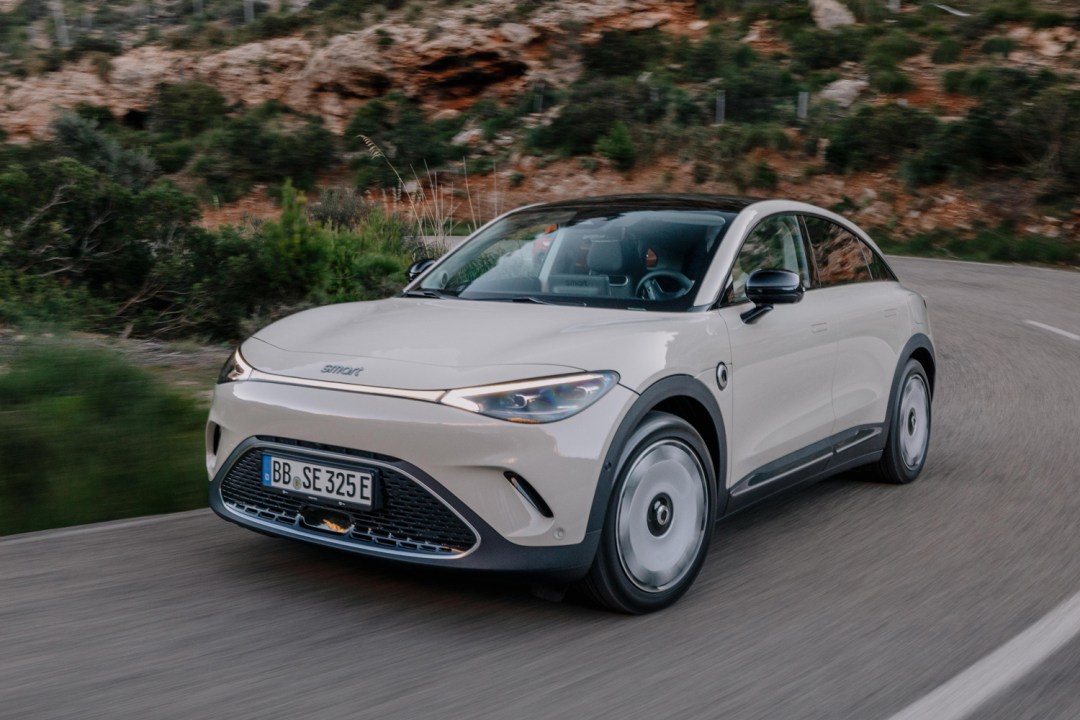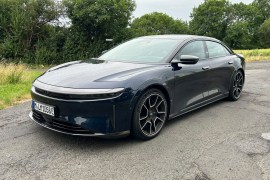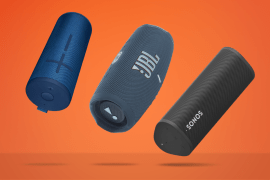Smart #3 review: Fast, fun and quirky too
Feels leaner and meaner than the Smart #1, but its looks and interior quirks might not suit everyone

Stuff Verdict
The Smart #3 blends SUV and coupe styling with a much more entertaining drive appeal than that found from the Smart #1. It’s a lot of fun.
Pros
- SUV size with small car dynamism
- Brabus model has impressive performance
Cons
- Quirky styling and interior not for everyone
- Far removed from the original Smart ethos
Apparently quite a lot of people are making a fuss about the Smart #1 not being true to the brand because it’s not dinky like earlier models. If you’re of the same opinion then you’ll probably not going to care much for the follow up. But the Smart #3 has one major upside: it can easily accommodate people who aren’t small either. If you’ve got an open mind this sporty coupe-style EV is well worth investigating, because it’s lots of fun.
That’s mainly because the Smart #3 feels like you’re sitting in it as opposed to on it. This SUV delivers a more hunkered down experience, which makes it more entertaining to drive than its baby brother. Smart has kept the distinctive styling touches both inside and out, making it a slightly quirky car without being too weird. It’s actually great to see a brand that stands out from the crowd.
Different model options mean there’s something for everyone with a £30k or higher budget. The entry-level Pro model costs £32,950, the Pro+ £36,950, and the Premium £39,950. Meanwhile, the very powerful and super quick Brabus will set you back £45,450. I’ve spent some time driving the latter two and the news is mostly good. If you like fast EVs, the news is even better.
The styling






Smart’s designers have fettled the SEA platform used for the Smart #1, delivering a longer wheelbase here. To these eyes the Smart #3 is better proportioned. That’s also down to the swooping roofline, which is even better with a contrasting colour to enhance the effect and a full 80mm less in stature than its close relative. Overall, the clean lines work to great effect, although to my mind it works so much better in one of the brighter colours as opposed to pale shades, which tend to do the body shape a disservice.
The Smart #3 is still properly spacious inside, with more than enough leg and head room in the back to handle people of all shapes and sizes. It’s deceptively large in fact, especially when you look at it from the outside. Even better is the quality and comfiness of the seats, which pack in some nifty coverings and make light work of even the bumpiest of journeys. It’s easy to see the Smart #3 working well in the UK.
The boot isn’t the biggest in the business, although there’s a sneaky lower compartment lurking beneath the floor. The space can also be boosted from 370 litres right up to 1160 litres if you drop the back seats. A frunk, hiding under the bonnet, offers up 15 litres as a consolation prize too.
The drive





I started off with the Premium model, which comes with a larger 66kWh battery versus the 49kWh one found in the entry-level trim. That means you get 283 miles of range instead of 270. The performance-minded Brabus car I tried later also has the bigger battery, but range is less at 258 miles (for obvious reasons). You can charge the bigger battery at up to 150kW, going from 10 to 80% in 30 minutes; the smaller one takes the same time on a 130kW maximum charge.
The all-wheel drive Brabus model offers 428bhp, roughly split to 158 at the front and 270 at the rear. The rest of the range makes do with 268bhp total, so it’s easy to see why anyone with a penchant for power will love the Brabus. Personally I think there’s a little more oomph than most will need, but doubtless there’s a market for family cars with hot hatch-besting performance.
The best thing about driving any variant of the Smart #3 over the Smart #1 is its lower stance. Visually it’s obvious to see, but feels even more noticeable when you settle yourself down into the lower seats. The very similar cockpit layout follows the Smart #1’s theme, but the car is just that much more fun to drive. The chunky steering wheel is a treat. Drive selection is done using the shifter on the steering column, while changing modes (Eco, Comfort, Sport) has to be done via the screen. That tended to leave me sticking to Comfort, which is a great all-round option.
The Smart #3 gets away at the lights in tasty fashion and can hold its own on cheeky mountain roads, though be prepared to get your foot heavily on the brake pedal if you need to slow the car. It’s a hefty thing to pull up if you’re taken by surprise. The tweaked suspension setup is very noticeable when comparing it to the Smart #1. Overall, it’s probably the main thing that makes the Smart #3 so rewarding to drive.
The technology







Much like the Smart #1, the interior of the Smart #3 comes with all of those funky tech touches that makes the brand what it is. The dashboard is dominated by a 12.8in full HD touchscreen, with the same quirky icons and artwork including an animated cheetah – as opposed to the fox seen in the Smart #1. The look and feel might not be to everyone’s taste, but if you keep an open mind it works.
However, it’s also worth bearing in mind that just like the Volvo EX30 that sits on the same platform, nearly all of the controls are hidden within the touchscreen. You’ll need to adjust things like door mirrors by finding them in the menu, then toggling them using the buttons on the steering wheel. It kind of works once you’ve set the car up how you like it, and don’t expect to tweak it again while you’re on the move.
I rather like the graphics that Smart uses in its cars and everything is easy to read, especially in the case of the 9.2in instrument cluster and even more so via the head-up display. There are, naturally, plenty of annoying pilot assist features that might see you heading for the off switch where possible. They’re not really grating, although can become bothersome if you’re not someone who’s able to blot out nagging tech and even more naggy occupants.
Smart #3 verdict


I was disappointed that the sat nav, which had worked so well earlier on, let me down later in the day by dispatching my route and forcing me to call up Google Maps on my phone instead. I also don’t like the way the headrests push your bonce forwards and can’t be adjusted as they’re part of the seat. Oh, and the central storage binnacle gets in the way of your arm from time to time.
But some minor irritations aren’t enough to put me off the Smart #3. It’s much more engaging to drive than the Smart #1, mainly because it is lower and performs more ably on interesting roads. There’s also the performance potential if you plump for the Brabus model.
To my mind though, the standard cars work just fine and offer more than enough muscle to keep most people happy.
Stuff Says…
Blends SUV and coupe styling with a much more entertaining drive appeal than that found from the Smart #1. It’s a lot of fun.
Smart #3 technical specifications
| Powertrain | Permanent magnet synchronous |
| Battery | 66kWh |
| Power | 268bhp |
| Torque | 465lb-ft |
| 0-60mph | 5.8sec |
| Top speed | 112mph |
| Range | 283 miles |
| Charge rate | 150kW |
| Cargo volume | 370 litres |



